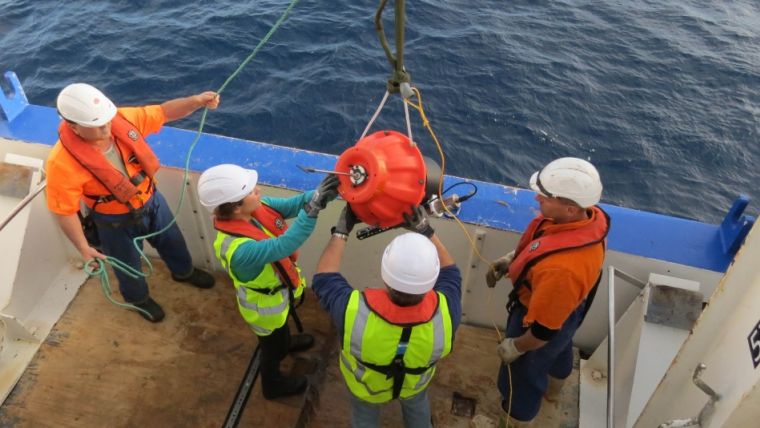NOAA Teams up with Paul G. Allen Philanthropies for Deep Ocean Observations
In a public-private partnership, Microsoft co-founder and philanthropist Paul G. Allen and NOAA’s Pacific Marine Environmental Laboratory will deploy a large array of Deep Argo ocean floats to expand ocean observations in a key area of the western South Atlantic Ocean. These instruments will collect data down to nearly four miles deep, and promise to lead scientists to a better understanding of how the bottom half of the ocean may influence long-term weather, climate and sea-level rise.
Paul G. Allen Philanthropies has committed more than USD4 million for the multi-year project, Jump-Starting Deep Argo. Allen’s research vessel R/V Petrel will deploy an array of these floats in the deep international waters east of Brazil.
Warm and Cold Currents
NOAA chose the western South Atlantic for the array because it provides a window into the global thermohaline circulation, called the great ocean conveyor belt, which is linked to global climate variations. At the bottom of the basin, very cold, dense Antarctic water flows northward while just above, slightly warmer, lighter North Atlantic deep water flows southward. Limited dataoffsite link have shown that the Antarctic water has been warming over the last three decades.
The project expands on the success of Argo, an international array of almost 4,000 freely drifting floats that measure temperature and salinity in the upper 2,000 meters or 1¼ miles of the global ocean. Since 2000, Argo has revolutionised oceanography, providing data publicly in near real-time that are vital for understanding the roles of ocean temperature, salinity, and current variations on weather, climate and ecosystems.
Understanding the 'Less-understood' Half of the Ocean
While Argo provides data on the upper half of the ocean volume, Deep Argo floats, which dive to 6,000 meters or 3.7 miles, will probe the less-understood bottom half. This new project will be the first comprehensive sampling of an entire deep ocean basin by this technology, which has been previously tested only in small pilot deployments.
Researchers from NOAA’s cooperative institutes at the University of Hawaii and University of Washington will contribute to the project.

Value staying current with hydrography?
Stay on the map with our expertly curated newsletters.
We provide educational insights, industry updates, and inspiring stories from the world of hydrography to help you learn, grow, and navigate your field with confidence. Don't miss out - subscribe today and ensure you're always informed, educated, and inspired by the latest in hydrographic technology and research.
Choose your newsletter(s)
























